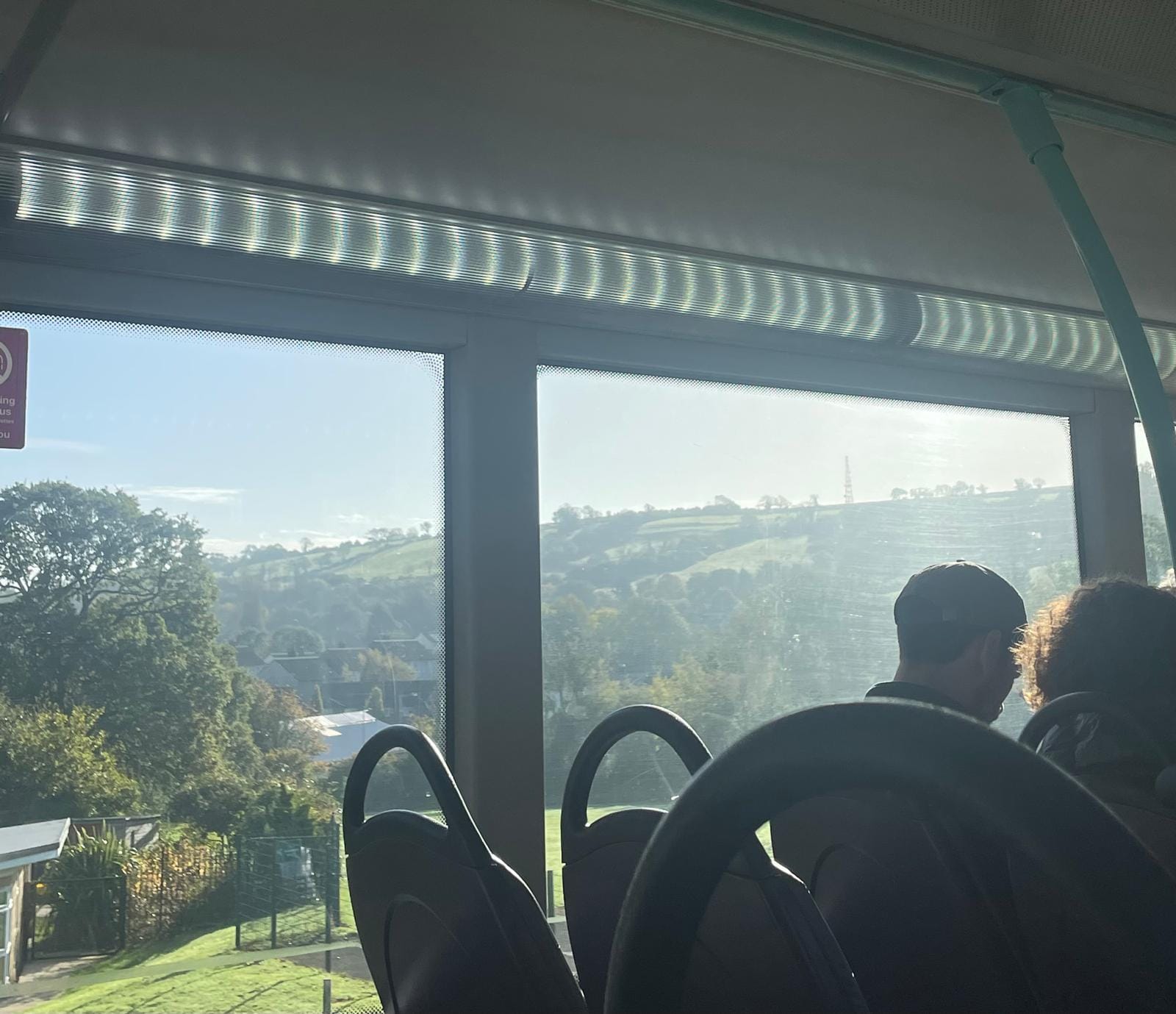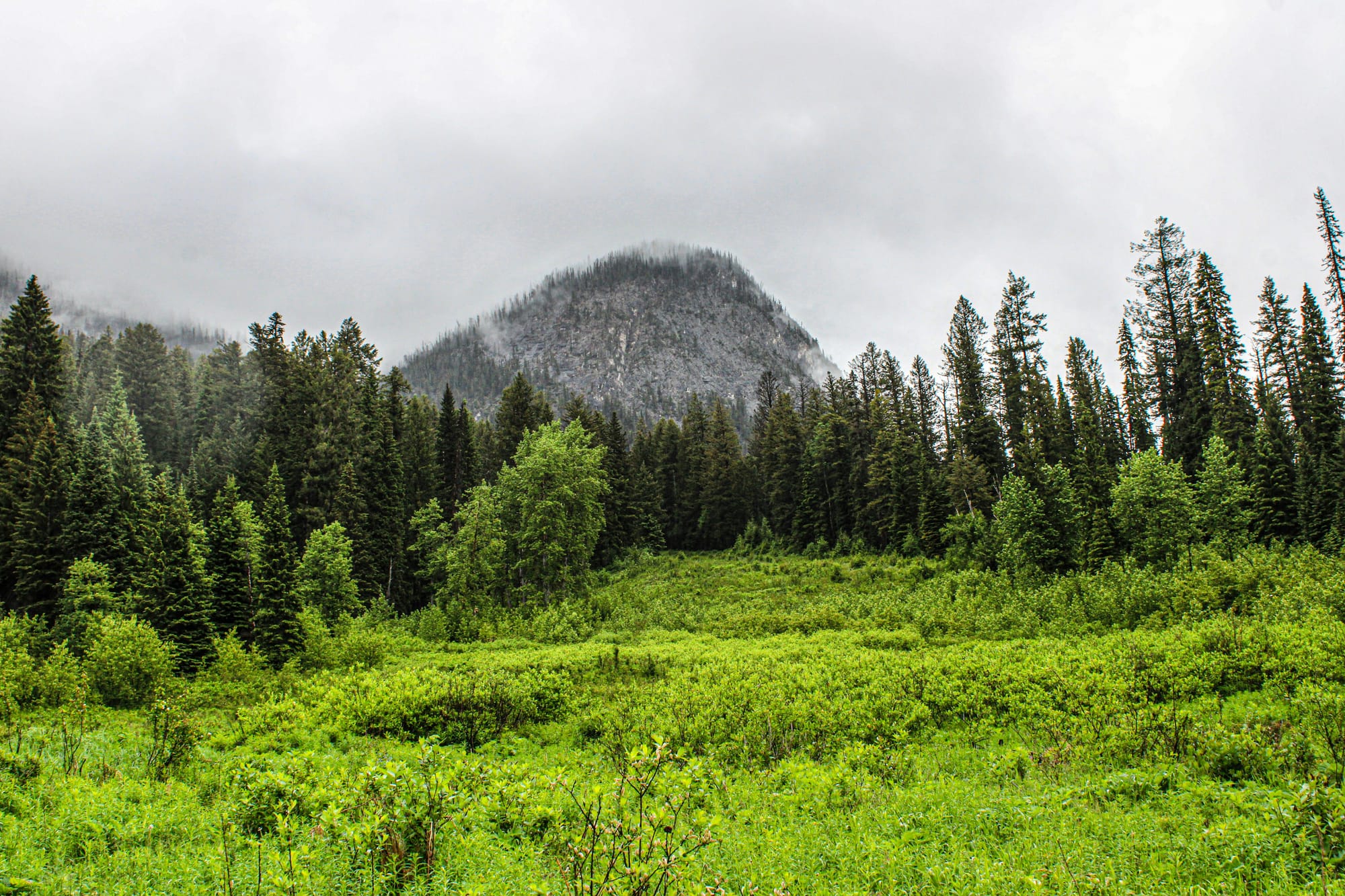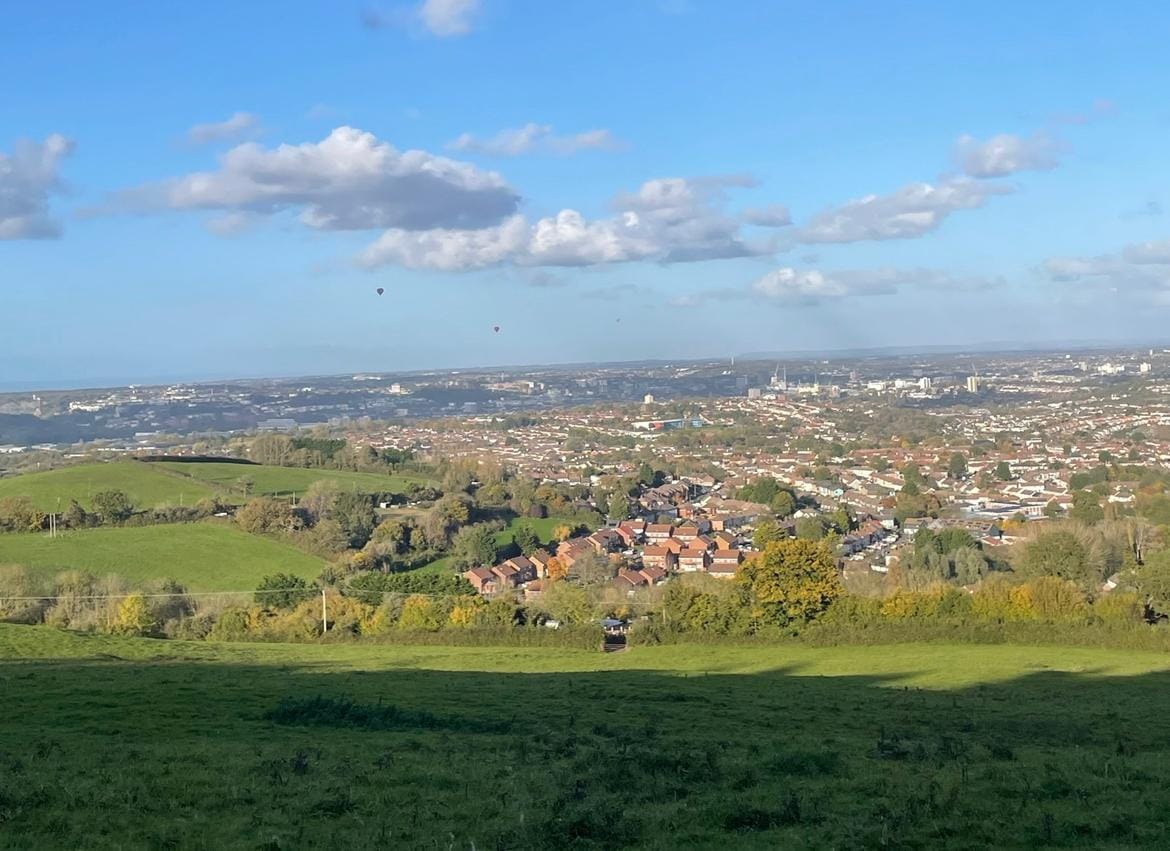By Charlotte Kyle, Social Media Manager
On an uncharacteristically sunny October day on Dundry hill, south Bristol, I joined a motley crew of trespassers for a Right to Roam peaceful protest event - a quest to the source of the Malago river.

The Bristol group’s monthly trespasses are a form of local-scale rebellion against the extremely poor state of public land access - in England we have access to only 8% of our land and 3% of our rivers, placing us at the bottom of the global rankings. The Right to Roam is explained as ‘the right to reconnect’, and ultimately the campaign has the goal of introducing a Scottish-style free roaming model across England, allowing the public to wander, picnic, and camp freely across our natural spaces.
Our trespass involved carrying out water quality testing on the Malago river, identifying various plant and animal species, and lots of interesting conversations around land access and biodiversity in the Bristol area. While the group were keen to make it clear that they were a political movement rather than an environmental one, there was such a deep reverence for the nature around us that it became impossible to separate the two. There was a moment when we passed through a seemingly ecologically dead field and the level of environmental damage left a palpable misery hanging over the group as we continued our romp.
In the face of the current Supreme Court case between the Dartmoor National Park Authority and Alexander Darwall, a British hedge fund manager and landowner, the Right to Roam has quickly turned from a marginal hippie movement into a key political player, constantly in the public eye and snapping up Guardian headlines on an impressively regular basis.
Dartmoor remains the last place in Britain with the concept of the ‘Commons’, a historical term which referred to land collectively owned by the peasants, used for collecting firewood or holding livestock, as opposed to the sealed-off forests and estates of the hunting elites. Darwall has been waging a war on these enshrined rights, and has spent the last several years doing everything in his power to keep the riff-raff as far from his manor as possible.
There is nothing new about this phenomenon, and in Nick Hayes’ Book of Trespass, the captivating read that kicked off this whole movement, the bloody history of land enclosure is eloquently laid out. The story starts with William the Conqueror’s vast sealing off of forest areas for hunting, and exposes some shocking moments within the movement, such as the 1932 mass trespass on Kinder Scout. This momentous political trespass event led to violent altercations between ramblers and gamekeepers, as well as several arrests, despite the fact that trespass was not and is not a criminal offence in England.
While historically, trespass protests may have attracted gamekeepers with a penchant for armed aggression and riled-up factory workers, the modern-day Right to Roam campaigners are sticking with the ‘free love’ feeling, with the October 2024 Dartmoor protest sending ‘waves of positive vibrations’ to the Supreme Court in the hopes of swaying their decision. The 60s aren’t over yet, it appears.
The Roamers that I spoke to on our river health quest expressed a multitude of motivations for attending these mini rebellions. All were, as expected, exceedingly outdoorsy, and most cited their past rambling incidents and run-ins with disgruntled farmers on areas with unmarked or confusing land access rules as the reason for them joining the movement.

They shared the psychological aspect to land enclosures, with local landowners erecting particularly ugly fences such as this one to discourage the public from using, well, public footpaths. They explained that they felt that farmers often did as much as possible to make ramblers feel unwelcome in natural spaces, and many referred to their growing realisations that farmed land was not actually ‘natural land’. They gloomily pondered over the fact that many of our well-loved British vistas such as the rugged, treeless Lake District or Highland landscapes were actually the product of human intervention and deforestation. And once you start noticing these issues in your local area, you simply can’t stop.
I was told about Nightingale Valley, a protected greenspace in Brislington which was historically enclosed by an old saw mill, but had its right to access enshrined after a mass trespass through St Anne’s Woods. There is now a beautiful forest there with an array of ancient trees, but walking up the valley you can find a sort of solidified oil spill where toxic waste was dumped decades ago, and still today all local services refuse to take responsibility for the cleanup.
Once you start engaging with local environmental issues, failings within traditional land discourse begin to reveal themselves - the idea that farmers and landowners have the skills and knowledge to maintain natural spaces is simply not true.
But the notion that we should simply let everyone loose on the land to wander around willy nilly may feel a little fanciful. It seems fairly obvious that human presence is always going to have an impact on natural spaces, and the compatibility of widespread human land access and biodiversity is hotly contested.
I discussed this extensively with the trespassers, and we came to an interesting conclusion - psychologically, if you are raised with the idea that something belongs to you, you are less likely to damage it.
The movement really has little to do with changing boundaries themselves, and much more to do with an entire mindset shift at every level of society. Countries with a fully enshrined right to roam often have less issues with littering because children are raised with the importance of respecting land at the center of everything they do. Of course, certain areas will still need specific maintenance and protection to ensure biodiversity, and education is paramount, but the psychological shift that comes with the concept of common land ownership appears to do a lot of heavy lifting.
As we tromped back down Dundry Hill, our boots muddied, water samples in hand, and minds brimming with radical notions of communal picnics and open rivers, it struck me that the Right to Roam isn’t just about land access—it’s about reclaiming something far more elusive: the right to belong. It felt good to dream of the day where we may all feel free to wander a little more wildly, picnic without paranoia, and see fences as nothing more than polite suggestions. After all, if we can’t claim a riverbank or a hilltop, what can we claim as our own? It may appear that freedom really does come one muddy boot print at a time.
“Any friend of mine walks where he likes in this country, or I’ll want to know the reason why” - Mr Badger, The Wind in the Willows.









